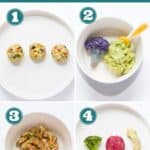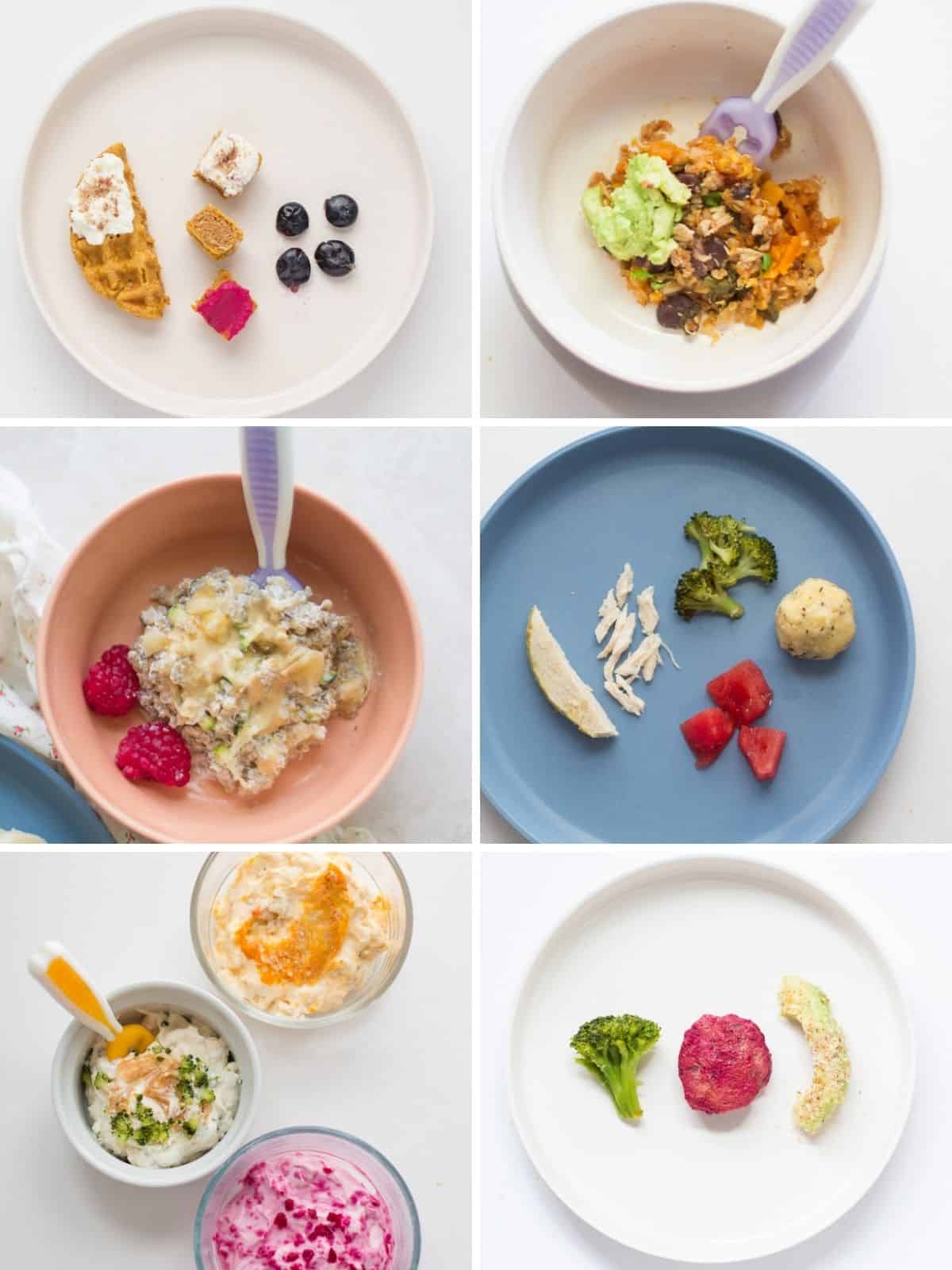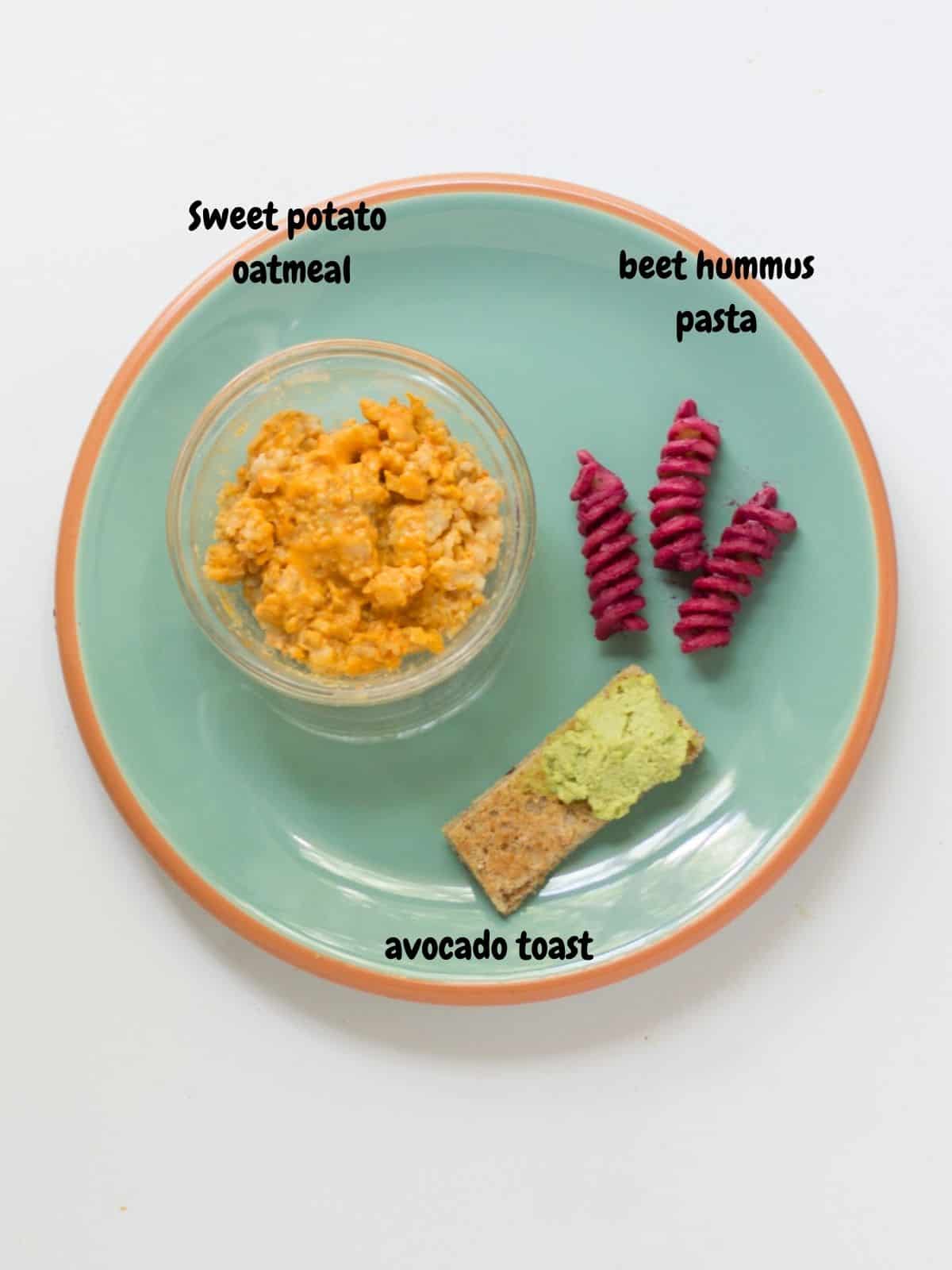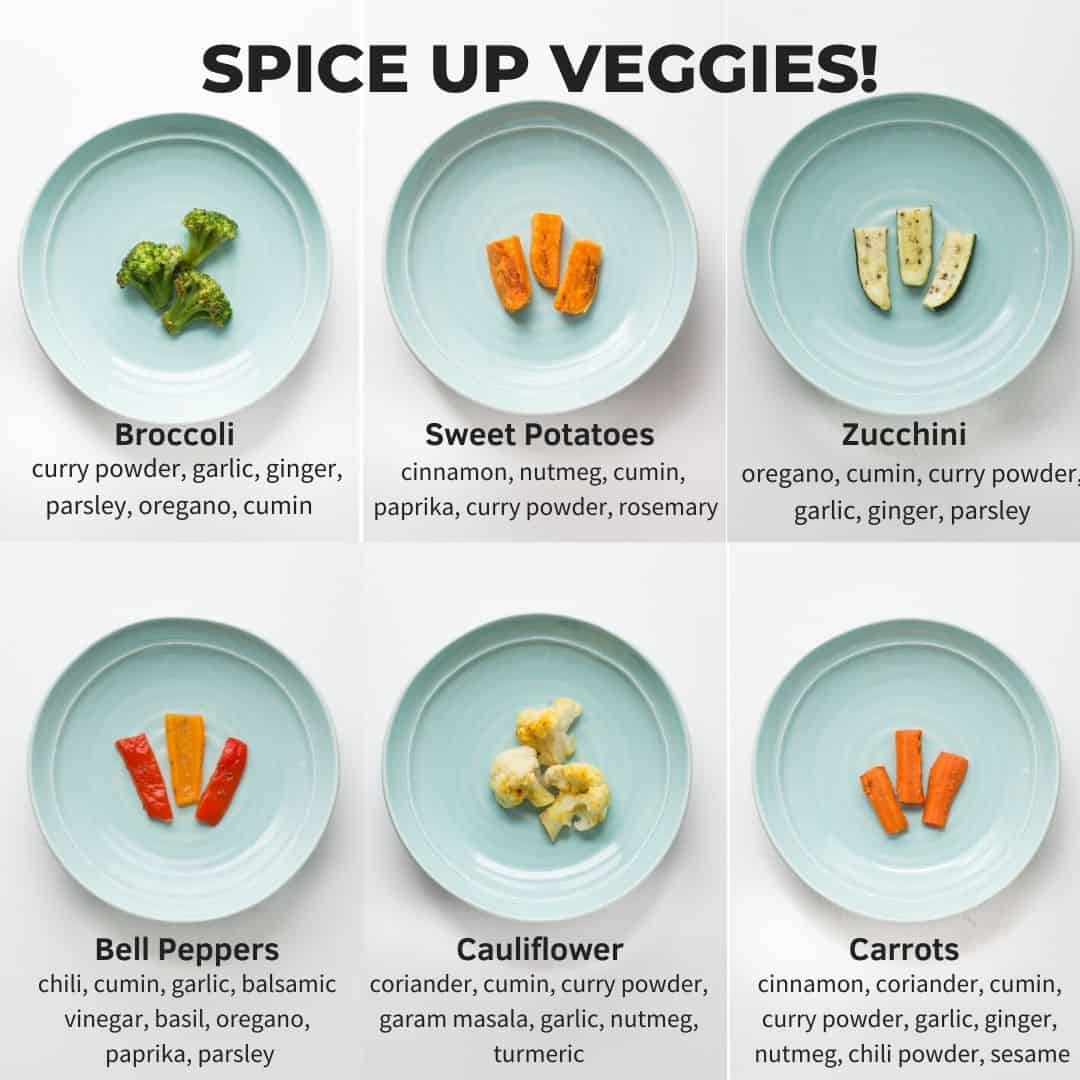There are three methods of starting solids. You may have exclusively served purees, chosen to do finger foods baby led weaning style, or taken the combination approach. Regardless of which feeding method you chose, by 8 months, 9 months at the latest, your baby’s meals should look like what I’m about to share. So let’s dive in!
Feeding Schedule
I want to start off by saying that having a schedule doesn’t mean you have to be super rigid with it. There’s always room for flexibility. Babies thrive on predictability and routine, and it can also help you to plan your day accordingly. In terms of when you should offer your baby their meals, it’s really up to you! For us, mornings are hectic, not to mention baby drank a lot of milk upon waking, so we started with lunch, then dinner, and added breakfast last. Even though we are mainly talking about food, let’s not forget that sleep is a very important piece to all of this. A well-rested baby means a happier baby who will be more interested in exploring the world of food. I’m sharing our schedule to give you an idea of how to fit in two meals along with milk and nap times. You will notice this pattern – eat, play, sleep.
7 am – wake up and milk 9-10:15 am – Nap 1 10:20 am – Milk 11 am – Meal #1 12:30-1:30pm – Nap 2 1:35 pm – Milk 3:30-4:30 pm – Nap 3 4:35 pm – Milk 6 pm – Meal #2 6:30 pm – Milk 7 pm – bedtime
How to build a well-balanced plate
How to Cook the Softest Scrambled Eggs for Baby What does a well-balanced plate look like in practice? With so many food choices, serving meals that will help meet your child’s nutrient needs can feel overwhelming. Please allow me to simplify and make this goal achievable and fun. I want to elaborate a little bit on high-energy foods. Think carbohydrates and fats. Some examples include nuts and seeds, avocado, full fat yogurt, grains, bread, etc. Fat is an essential nutrient at this age for optimal brain development and growth. And these calorically dense foods are a great way to make every bite count. You’ll notice that some of the foods overlap. For instance, avocado is a fruit but it’s also a high-energy food or beans are a good source of iron but also a vegetable. Simply decide which category you want the food to count as and fill in the rest. In terms of the amount, start with small portions to make it less overwhelming for your baby. This will also reduce food waste. You can always offer more if they seem interested.
Real Life Examples
Here are some meals I served to my baby.
Tips for Graduating from Purees
Regardless of which feeding method you chose, the goal is that by 9 months, at the latest, your baby is being introduced to a wide variety of flavors and textures from all food groups. That’s because research shows that infants who are introduced to textures by 9 months generally have less feeding problems and greater food acceptance down the road. If you’ve been spoon feeding, start by preloading the spoon and allowing them to pick it up themselves. There may be great resistance at first, and your baby may want you to continue feeding them. But stand strong. Your baby will eventually realize that mommy or daddy won’t feed them no matter what and begin to explore for themselves. Also, it’s completely normal for your baby to start eating less during this transition. Managing textured foods is a whole new experience, and your baby will need some extra time to learn the skills to handle them. And they will when given plenty of opportunities to do so. Therefore, don’t fall back on purees. Keep marching forward. In the meantime, you can increase the amount of milk feeds. For more tips, here’s an in-depth post on how to transition from purees to table foods.
Best Baby Foods for 8-9 Months
By this age, your baby is working on developing their pincer grasp, which involves using the thumb and the index finger to pick up small pieces of food. You can start serving bite-sized pieces to help practice this new skill. But do continue offering big pieces of food to minimize frustration and to allow for practice with taking bites.
Iron-rich foods
I’ve dedicated a whole post to this along with recipes! I believe you will find it extremely helpful. Best iron-rich foods for babies
High-energy foods
Avocado Oatmeal Nuts and Seeds Lentils Quinoa Yogurt Bread Pasta Muffins Dips/Sauces Peanut butter waffles Pancakes
Best Weight Gain Foods for Babies
Fruits and Vegetables
Butternut squash Sweet potatoes Beetroot Cauliflower Broccoli Bell peppers Mashed peas Zucchini Carrots Cabbage Mushrooms Parsnip Mango Apple Pear Banana Kiwi Berries (strawberries, raspberries, blueberries), smashed) Watermelon Peaches
When cooking vegetables, don’t forget to season with herbs and spices!
Tips for Helping your Baby Eat
Offer meals when your baby is happy and seems interested in eating. Make sure foods are soft and easy to smash with your fingers. While their hands will be their best tools for quite some time, offer utensils from the beginning for exposure and familiarity. Don’t be afraid to season the food with a wide variety of herbs and spices. It’s such a delicious and easy way to expose them to all the different flavors. Hold off on salt! For foods that are harder to pick up, like rice and quinoa, mash with some sweet potato or avocado to make them easier to eat. Your baby may still be doing a lot of playing and throwing at this point, and that’s ok. They are still learning to self feed and it’s a skill that takes A LOT of practice. So be consistent and patient. Stick to your mealtime schedule and eat alongside your baby so they can watch and learn from you. If your baby doesn’t eat much during mealtime, you can offer a little bit of breastmilk/formula afterwards.
What to do when baby doesn’t eat
What Foods to Avoid
Hard or crunchy texture – raw fruits and vegetables, whole nuts, crackers, popcorn, etc. Sticky texture – a glob of peanut or nut butter Honey until 1 year as it can lead to botulism – it’s unsafe even if it’s uncooked. Be sure to read the labels as it’s an ingredient in a lot of unexpected foods. Unpasteurized milk, yogurt, cheese, or juice (which should be avoid until 2) Milk for drinking (can be used in recipes) High-sodium foods Added sugars
Favorite Feeding Tools
Here are the essentials that I know will save you time and your sanity! I know it’s tempting to buy all the adorable products that are out there. But truly, these are really all you need!
Additional Resource
If you are struggling to move beyond purees or feeling overwhelmed trying to give your baby the best, here’s a complete roadmap that would show you through daily videos and photos of what foods and how to serve them to your baby AND the rest of the family at the same time!





